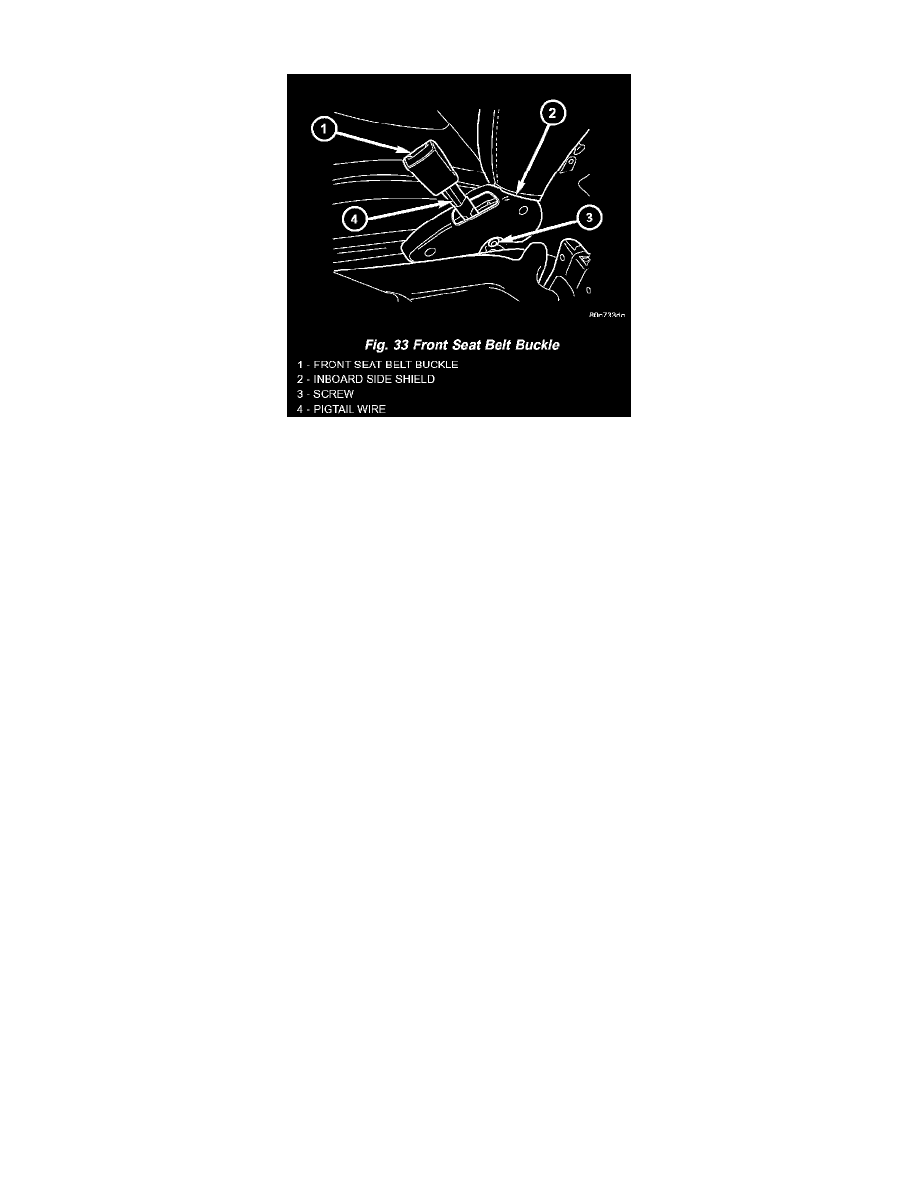Liberty Sport 4WD L4-2.4L VIN 1 (2002)

Seat Belt Buckle Switch: Description and Operation
Fig.33 Front Seat Belt Buckle
SEAT BELT SWITCH
The seat belt switch for this model is actually a Hall Effect-type sensor. This sensor consists of a fixed-position, Hall Effect Integrated Circuit (IC)
chip and a small, movable, permanent magnet that are integral to each front seat belt buckle. The front seat belt buckles are each located on a
stamped steel stanchion secured with a screw to the inboard side of each front seat cushion frame between the seat and the floor panel transmission
tunnel. The seat belt switches are connected to the vehicle electrical system through a two-lead pigtail wire and connector on the seat belt
buckle-half, which is connected to a wire harness connector and take out of the seat wire harness beneath the rear edge of the seat cushion frame. A
diagnostic resistor is connected in parallel with the IC where the two pigtail wire leads connect to the IC pins.
The seat belt switch cannot be adjusted or repaired and, if faulty or damaged, the entire seat belt bucklehalf unit must be replaced.
The seat belt switches are designed to provide a status signal to the seat belt switch sense inputs of the Airbag Control Module (ACM) indicating
whether the front seat belts are fastened. The ACM uses the seat belt switch inputs as a factor in determining what level of force with which it
should deploy the multistage driver and passenger airbags. In addition, the ACM sends electronic messages to the ElectroMechanical Instrument
Cluster (EMIC) to control the seat belt indicator based upon the status of the driver side front seat belt switch. A spring-loaded plastic slide with a
small, enclosed permanent magnet is integral to the buckle latch mechanism. When a seat belt tip-half is inserted and latched into the seat belt
buckle, the slide is pushed downward and into close proximity of the Hall Effect Integrated Circuit (IC) chip within the buckle, which induces a
current within the chip. The chip provides this induced current as an output to the ACM, which monitors the current to determine the status of the
front seat belts. When the seat belt is unbuckled, the spring-loaded slide and permanent magnet move upward and away from the IC, causing the
output current from the seat belt switch to be reduced.
The seat belt switch receives a supply current from the ACM, and the ACM senses the status of the front seat belts through its pigtail wire
connection to the seat wire harness. The ACM also monitors the condition of the seat belt switch circuits through circuit resistance created by the
diagnostic resistor. The ACM will illuminate the airbag indicator in the EMIC and store a Diagnostic Trouble Code (DTC) for any fault that is
detected in either seat belt switch circuit. For proper diagnosis of the seat belt switches, a DRBIII scan tool is required. Refer to the appropriate
diagnostic information.
